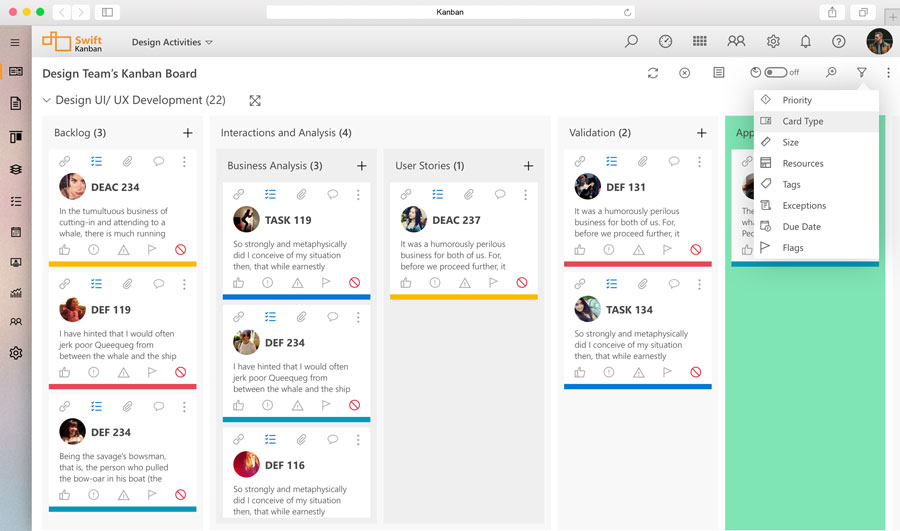
Kanban is your path to Enterprise Agility. Whether you are a software or IT organization or a business function, Kanban software helps you visualize you work, improve and optimize your flow and deliver products and services to your customers faster, more often and with greater quality. credits, digite.com
Also Known As
The term "kanban" is Japanese (看板), with the sense of a sign, poster or billboard, and derived from roots which literally translate as "visual board". Its meaning within the Agile context is borrowed from the Toyota Production System, where it designates a system to control the inventory levels of various parts. It is analogous to (and in fact inspired by) cards placed behind products on supermarket shelves to signal "out of stock" items and trigger a resupply "just in time". The Toyota system affords a precise accounting of inventory or "work in process", and strives for a reduction of inventory levels, considered wasteful and harmful to performance. The phrase "Kanban method" also refers to an approach to continuous improvement which relies on visualizing the current system of work scheduling, managing "flow" as the primary measure of performance, and whole-system optimization - as a process improvement approach, it does not prescribe any particular practices.
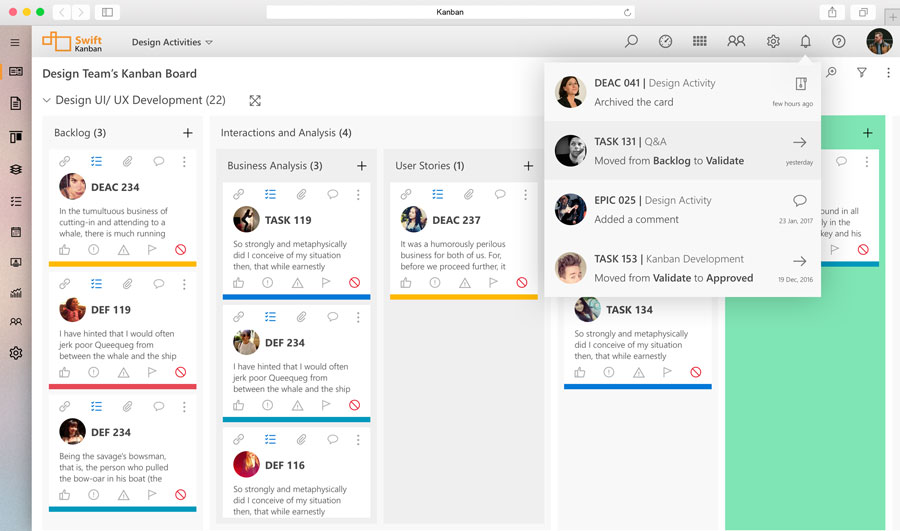
We already have a product revolving around Kanban and it's methodologies. The current UI and UX of our Kanban product has become quite outdated with more UI/ UX flaws than functionalities. Our clients also mentioned the same problems to us that your product is one of the most powerful tools in the market but it lacks that clean UI. There are things popping out of everywhere, confusing the user of which features to use and which to not. There is no transition between a naive user and an experienced one.
To shake things up a bit, we started to reimagine the Kanban board with existing design languages present, out of the many we came down to two, namely, Material Design and Fluent Design. I started working on the fluent part while the others were working up on the material one. We kinda tried to streamline the entire process from landing on our product page to signing up to Onboarding to the board itself. The whole exercise is still in progress and we have definitely come a long way than what we had earlier.
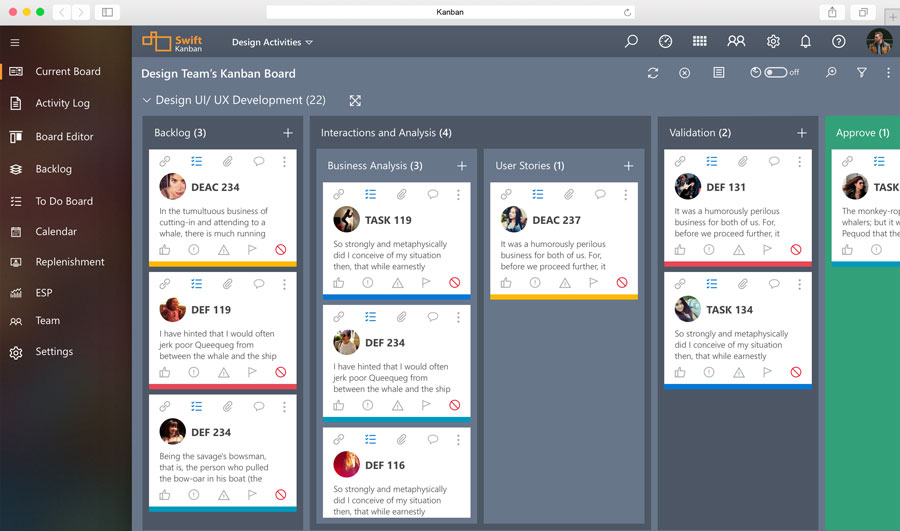
Kanban boards are generally more sophisticated than "mere" task boards. This is not a mistake in and of itself; however, it is not advisable that the kanban board should serve as a pretext to reintroduce a "waterfall"-like, linear sequence of activities structuring the process of software development. This may lead to the creation of information silos or over-specialization among team members. In particular, teams should be wary of kanban boards not accompanied by WIP limits, not only defined but also enforced with respect to demands from managers, customers or other stakehoders. It is from these limits that the kanban approach derives its effectiveness.
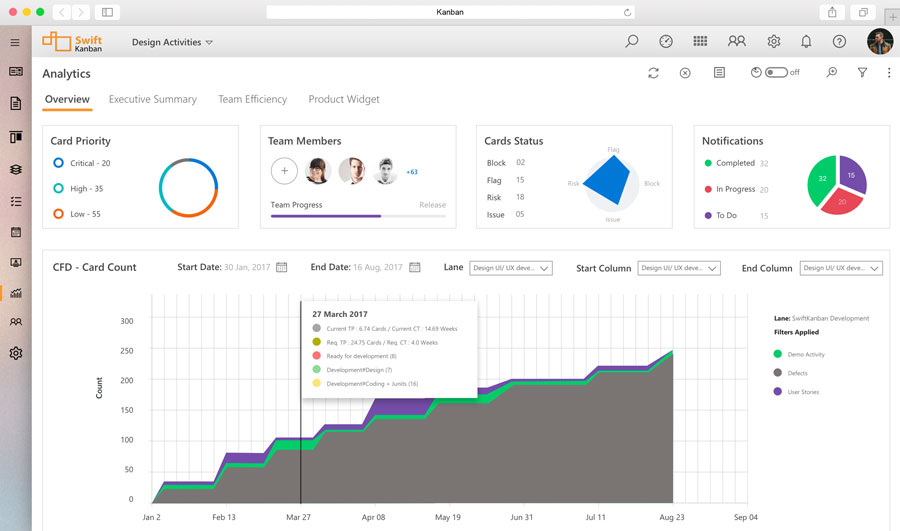
In some contexts, measuring lead time rather than velocity, and dispensing with the regular rhythm of iterations, may be the more appropriate choice: for instance, when there is little concern with achieving a specific release date, or when the team's work is by nature continuous and ongoing, such as enhancement or maintenance, in particular of more than one product. At the risk of oversimplifying, a "kanban board" setup can be considered first for efforts involving maintenance or ongoing evolution, whereas a "task board" setup may be a more natural first choice in efforts described as "projects".
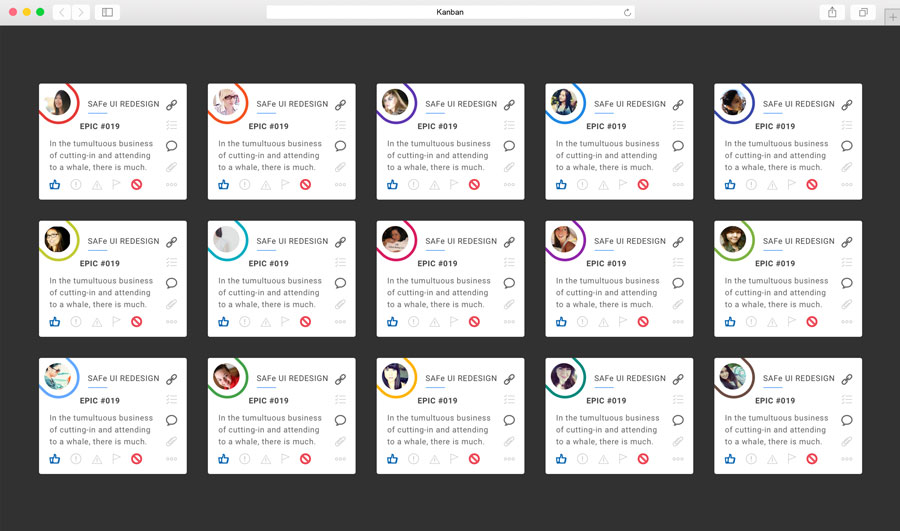
We ended up using Material Design though :(